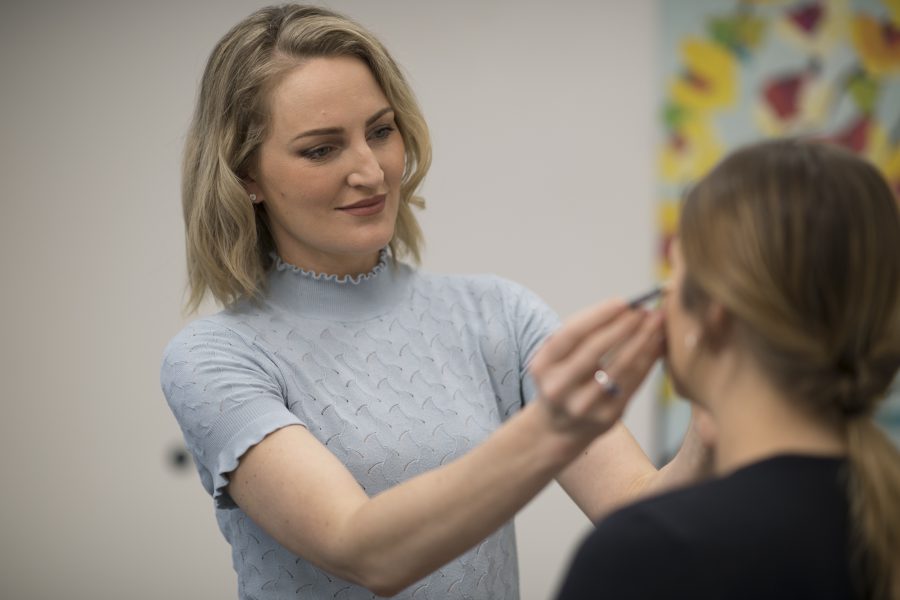In the right hands, injectables can enhance a face and make it look balanced and youthful, so how come some people end up looking worse post-treatment? Dermatologist and facial rejuvenation specialist Dr Cara McDonald explains.
The patient walks into the room and your first thought is that something is “not quite right”. They are often a new patient but may be a regular. Undeniably somewhere along the line, their cosmetic injectables have gone a little off-piste. We’ve all been there. We’ve all been responsible for a funny looking face. The patient may have “felt it” but can’t usually articulate their concern. The default position is often “I must need more”. In other cases, the patient is oblivious. It may have been a gradual process, they may have even requested it, but deep down, you know they’re not looking their best.
They might just look unnatural, they might look older, they might just not be as attractive as they could be, but you know they could look and feel better. We’re not talking the obvious; overdone, over-filled, frozen, the plastic positive look that is ‘on-trend’ in some circles. We’re talking ‘not quite right’. What is the cause and how can we fix it? How do you address it with the patient? What happens if you don’t? Sometimes it can be difficult to identify exactly what went wrong, especially if you weren’t the treating clinician. It may be even harder to fix it, but we should all take on this responsibility to give every patient their best possible treatment and maintain the standard and reputation of our industry. So where do you start?

A quick mental checklist for the most common causes of the funny looking face allows you to identify and address the areas of concern. It gives you a way to discuss it with the patients and gives them a chance to be the best version of themselves. Even if you were the treating clinician, most patients are happy to hear that you feel their results could be better and that a different approach is needed. Unbalanced This is a common mistake but not always easy to identify. There are many patients who continually request “the same again” – repeat injectable treatments, and they end up with a loss of balance and harmony in the face. The problem may be compounded by the fact that many injectors are not adequately trained or do not feel comfortable injecting all areas of the face, and therefore will not volunteer to the patient that they would benefit from an alternative treatment. It may be a well-augmented lip or a completely smooth forehead but the problem occurs when these features no longer appear to belong on the face they inhabit. In these cases it is important to start over with a full face consult and explain that repeat treatments may be further emphasising problems in the untreated areas. Offer suggestions to rebalance the face and advise that they will look more natural by treating more areas rather than less.
Loss of definition between cosmetic units
We should all have a tear trough, nasolabial folds and a mental crease. They give the face definition and frame our features. However, when these lines or hollows become more prominent they signify advancing age. For this reason they have become the enemy that some people are out to destroy. Many fail to realise that the complete loss of these features gives the face an unnatural, distorted appearance and reduces attractiveness. We all apply eyeshadow to the upper lid because it defines and enhances the eye, yet we are determined to erase all evidence of any “shadow” below. This actually detracts from the natural beauty of the eye. These hollows are all best managed by lifting or stretching the surrounding skin first. For example, a deep tear trough generally needs the temple and lateral cheek to be addressed as well. Following this we should offer to soften or partially correct but not remove these hollows.
Loss of subtle anatomical features
A beautiful lip has a textured vermillion, the cheek an ogee curve. When these features are over-enhanced they tend to lose their natural shape and appear less attractive. This is most often seen in cases where a lot of volume has been added quickly. The normal muscle movement may also be lost due to myomodulation from the filler. In augmentation, volume should be added slowly and precisely to ensure natural definition and movement is retained.
Muscle atrophy
If you have your leg in a plaster cast for two months, it shrinks. If you don’t do any weight bearing exercise, your bones will thin. So, what do you think happens when you completely freeze the muscles of the upper face using muscle-relaxant injections over long periods of time? You get wasting of the muscles and thinning of the bone – both of which result in an aged, skeletal, shiny appearance. The muscle bulk makes up the majority of the volume between the skin surface and the bone on our forehead, so loss of this muscle results in thinner looking skin and premature ageing. As a face ages we need to show restraint with the muscle relaxants! Try to avoid fully freezing the muscles and wait for some return in muscle strength before retreating.
Line chasing
This problem is usually patient-driven due to the misconception that lines cause the “feels”. Master injector Mauricio de Maio tells us that we should always consider patient wants, patient feels and patient needs. Patient ‘want’ may be removal of lines, but what they ‘feel’ is in fact that they look tired or old. They assume, that it is just the lines causing them to look tired or old, when in in most cases it is multi-factorial and related to full face changes and volume loss, which are less easily self-diagnosed. This can be difficult to address but line-chasing normally results in a distorted, funny looking face and may fail to improve the ‘feels’ leading to a dissatisfied patient. They often think they just need more, which further exacerbates the problem. We must try to get patients to assess their lines from conversation distance and demonstrate how the other areas of the face contribute to the overall negative emotions associated with appearance rather than lines alone.
Age inappropriate
In long-term patients we need to consider age-management rather than anti-ageing. If
your patient is looking fabulous, it’s tempting to continually ‘top them up’ with repeat treatments but at some stage they tend to look not quite right. I like to encourage more movement lines as my patients age and use dermal fillers more for lift and less for volumisation. Always think ahead to how they might want to look in five or ten years.
Neglect of co-existing problems
This can be the downfall of even the best cosmetic work. Poor skin texture, actinic damage, scarring, pigmentation, rosacea and dermatitis all detract from overall appearance and increase perceived age. Addressing skincare and treating skin conditions should be a priority.
Why are we getting it wrong?
Patient-pleasing, limited skills, poor artistic eye, limited confidence, inadequate training or knowledge of the anatomy and the ageing face, money-driven treatments and insufficient time spent on consultation. These are just a few of the reasons. We need to invest more time in understanding our patients, their reasons for seeking treatment and their desired outcomes. We need to listen and learn, then explain and educate. We need to understand them, their motivation and their needs. They need to understand us, and value our training, our expertise and our opinion. This takes time but their satisfaction and loyalty will make it worthwhile.
Dr. Cara McDonald is a highly trained specialist dermatologist. She is one of the directors of Complete Skin Specialists Dermatology located in Sunbury. She specialises in full face rejuvenation using injectable dermal fillers and muscle relaxant agents and combines these with appropriate skincare and laser treatments as needed.




